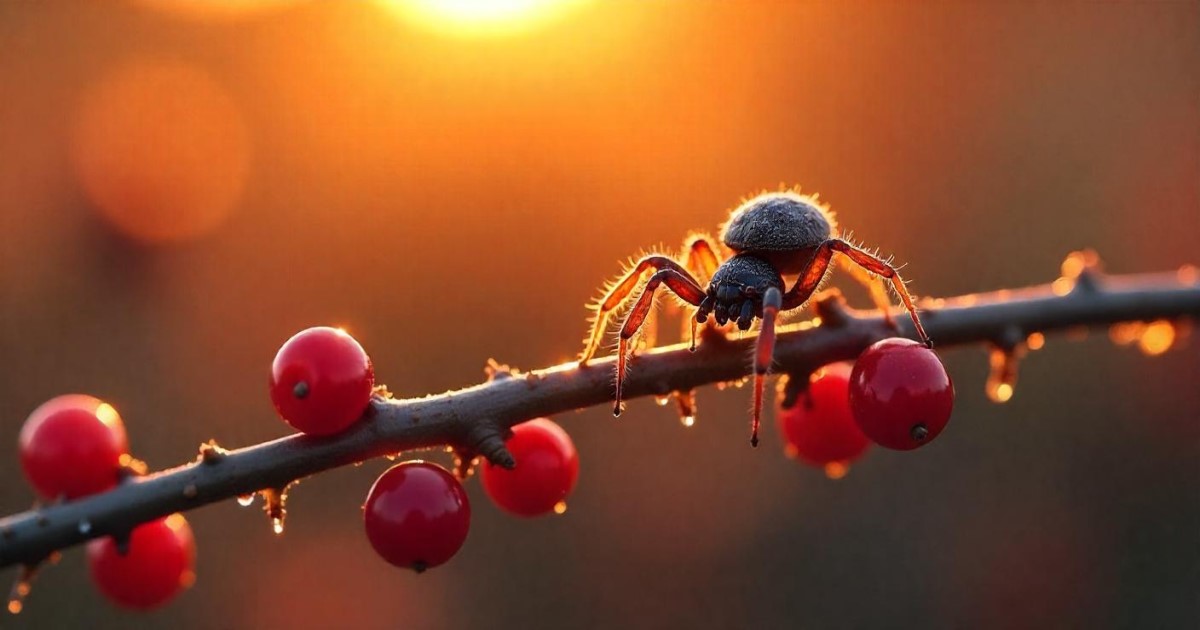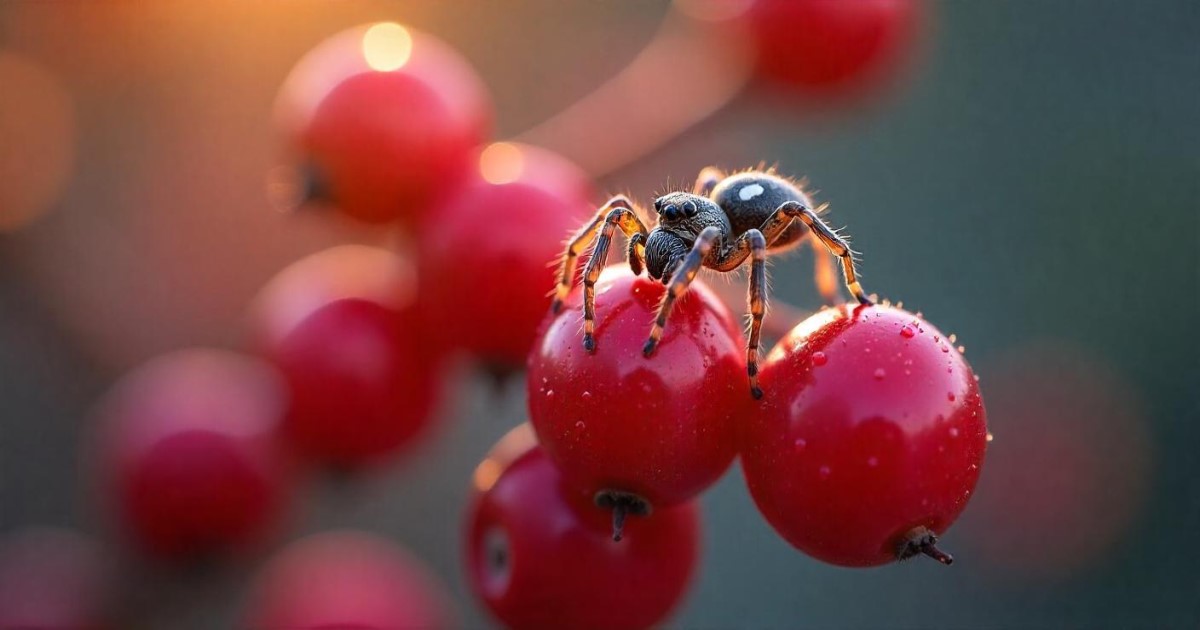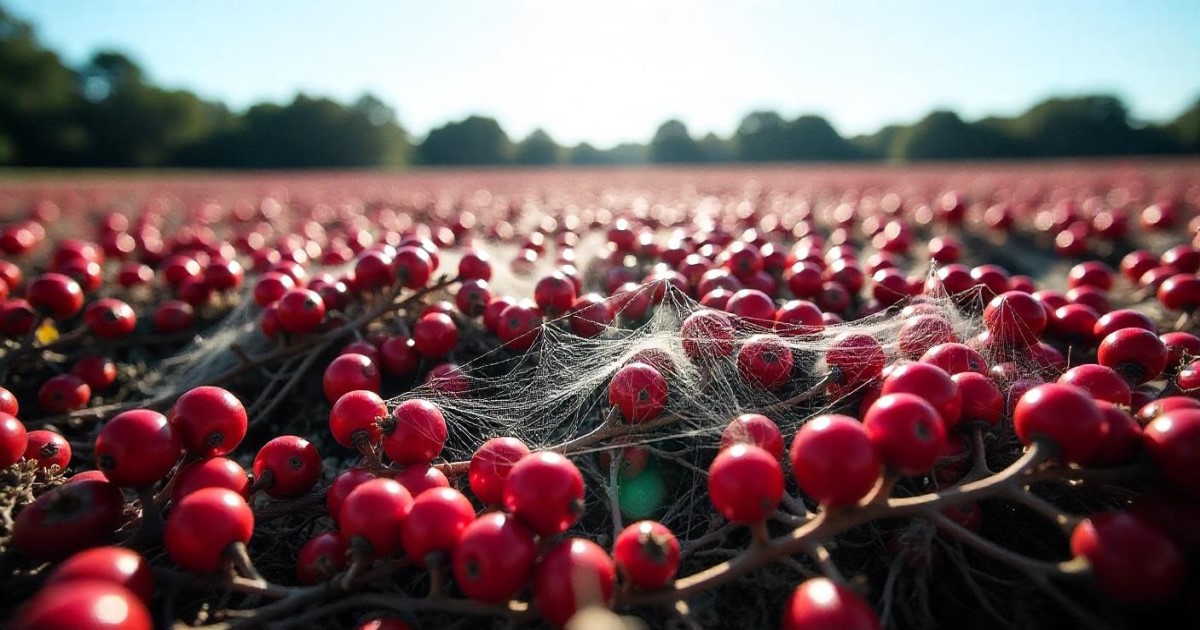Cranberry Field Spiders: Nature’s Tiny Pest Controllers

Did you know spiders are a cranberry farmer’s secret weapon? Often overlooked, cranberry field spiders play a crucial role in sustainable agriculture and natural pest management. These tiny predators thrive in the moist, bog-like environment of cranberry fields, where they help control harmful insect populations that could damage crops. By reducing the need for chemical pesticides, spiders not only protect cranberry yields but also promote eco-friendly farming practices. In this article, we’ll explore the fascinating world of cranberry field spiders, their benefits, and why they’re essential to the health of cranberry bogs.
Why Are Spiders Found in Cranberry Fields?

Cranberry fields provide the perfect habitat for spiders, thanks to their unique moist, bog-like environment. These waterlogged conditions, essential for cranberry growth, also create an ideal ecosystem for spiders to thrive. The dense vegetation and consistent moisture levels offer shelter and breeding grounds for these arachnids.
But what truly makes cranberry fields a spider paradise is the abundance of prey. Insects like aphids, beetles, and moths, which are common pests in cranberry bogs, serve as a reliable food source for spiders. This makes cranberry fields not only a productive agricultural space but also a bustling hub for natural pest control. By preying on these insects, cranberry field spiders help maintain a balanced ecosystem, reducing the need for chemical interventions and supporting sustainable farming practices.
Common Spider Species in Cranberry Fields

Cranberry fields are home to a variety of spider species, each playing a unique role in maintaining the ecosystem. Here are the most common cranberry field spiders you’re likely to encounter:
- Orb-Weavers (e.g., Araneus species)
- Known for their intricate, circular webs, orb-weavers are master architects.
- They wait patiently in their webs to catch flying insects like moths and beetles.
- Fun fact: Orb-weavers rebuild their webs daily, ensuring they’re always ready for the next meal.
- Wolf Spiders (e.g., Lycosidae family)
- These ground-dwelling hunters don’t spin webs—they chase down their prey!
- Wolf spiders are often found hiding in the dense vegetation of cranberry bogs.
- Fun fact: They carry their egg sacs on their backs and even give piggyback rides to their spiderlings.
- Jumping Spiders (e.g., Salticidae family)
- Small but mighty, jumping spiders are known for their incredible leaps to catch prey.
- They have excellent vision and are active hunters, often seen stalking insects on cranberry plants.
- Fun fact: Jumping spiders can jump up to 50 times their body length!
These cranberry field spiders are not only fascinating but also vital for natural pest control. Their diverse hunting techniques and behaviors make them invaluable allies for cranberry farmers.
The Role of Spiders in Pest Control

Cranberry field spiders are nature’s pest control experts, playing a critical role in protecting cranberry crops. These arachnids are voracious predators, feeding on a wide range of insects that threaten cranberry plants.
Some of the most common pests they prey on include:
- Aphids: Small sap-sucking insects that can weaken cranberry plants.
- Beetles: Known for damaging leaves and fruit.
- Moths: Their larvae (caterpillars) can cause significant harm to cranberry crops.
By naturally controlling these pests, cranberry field spiders help reduce the need for chemical pesticides. This not only lowers farming costs but also promotes sustainable agriculture and protects the environment. Studies have shown that spiders can significantly decrease pest populations—in some cases, reducing pest numbers by up to 50-70% in agricultural settings.
For example, research published in the Journal of Applied Ecology highlights the effectiveness of spiders in integrated pest management (IPM) systems, particularly in crops like cranberries. By relying on these natural predators, farmers can maintain healthier crops while minimizing their ecological footprint.
In short, cranberry field spiders are invaluable allies in the fight against pests, proving that sometimes the best solutions come from nature itself.
Benefits of Spiders for Cranberry Farming

Cranberry field spiders are more than just pest controllers—they are key players in sustainable farming practices. By preying on harmful insects, these spiders help maintain the ecological balance of cranberry bogs, ensuring a healthy and productive crop environment.
Here’s how they benefit cranberry farming:
- Sustainable Pest Management: Spiders reduce the need for chemical pesticides, which can harm the environment and non-target species. This makes cranberry farming more eco-friendly and aligns with sustainable agriculture principles.
- Ecological Balance: By controlling pest populations, spiders prevent outbreaks that could disrupt the ecosystem. This balance is crucial for the long-term health of cranberry fields.
- Cost Savings for Farmers: Fewer pesticide applications mean lower costs for farmers. Studies have shown that natural pest control methods, like relying on cranberry field spiders, can save farmers up to 20-30% in pest management expenses.
In addition to these benefits, spiders contribute to biodiversity, making cranberry fields more resilient to environmental changes. By embracing these natural predators, farmers can cultivate healthier crops while protecting the planet.
Challenges and Misconceptions About Cranberry Field Spiders

Despite their benefits, cranberry field spiders are often misunderstood. Let’s clear up some common misconceptions and explore the challenges they present:
- Misconception: All Spiders Are Dangerous
- Truth: Most cranberry field spiders are harmless to humans. Species like orb-weavers, wolf spiders, and jumping spiders rarely bite and are not venomous enough to pose a threat. They’re far more interested in catching pests than interacting with people.
- Misconception: Spiders Damage Crops
- Truth: Spiders don’t harm cranberry plants. Instead, they protect them by preying on insects that do.
However, farmers do face some challenges when relying on spiders for pest control:
- Over-Reliance on Spiders: While spiders are effective, they can’t eliminate all pests alone. Farmers must balance natural methods with other integrated pest management (IPM) strategies.
- Climate Change Impacts: Rising temperatures and unpredictable weather can disrupt spider populations, affecting their ability to control pests.
By understanding these challenges and dispelling myths, we can better appreciate the role of cranberry field spiders in sustainable farming.
How Farmers Can Encourage Spider Populations
Encouraging cranberry field spiders to thrive is a win-win for farmers and the environment. Here are practical tips to create a spider-friendly habitat in cranberry fields:
- Avoid Overusing Pesticides
- Chemical pesticides can harm spiders and their prey. Reducing pesticide use allows spider populations to grow and naturally control pests.
- Maintain Natural Vegetation
- Spiders need shelter and breeding grounds. Leaving natural vegetation around cranberry fields provides the perfect habitat for them to thrive.
- Use Integrated Pest Management (IPM) Strategies
- Combine natural pest control methods (like spiders) with other eco-friendly practices, such as crop rotation and biological controls, to create a balanced ecosystem.
- Promote Biodiversity
- A diverse ecosystem supports not only spiders but also other beneficial organisms. Planting native flowers and shrubs around cranberry fields can attract pollinators and other natural predators, enhancing overall farm health.
By adopting these practices, farmers can create a welcoming environment for cranberry field spiders, ensuring they continue to play their vital role in sustainable agriculture.
Fun Facts About Cranberry Field Spiders
Cranberry field spiders are not just helpful—they’re fascinating creatures with some incredible abilities! Here are some fun of fun that highlight their unique features:
- Pest-Eating Powerhouses
- Spiders can consume pests equal to their body weight every day. This makes them incredibly efficient natural pest controllers in cranberry fields.
- Ballooning Spiders
- Some spiders, like young orb-weavers, use a technique called “ballooning” to travel. They release silk threads that catch the wind, allowing them to float across fields and colonize new areas.
- Super-Strong Silk
- Spider silk is one of nature’s most versatile materials. It’s stronger than steel (relative to its size) and can be used for building webs, wrapping prey, or even creating shelters.
These fun facts show just how remarkable cranberry field spiders are. Not only do they protect crops, but they also showcase the wonders of nature in action!
Conclusion
Cranberry field spiders are more than just residents of the bog—they’re essential allies in sustainable agriculture. From controlling pest populations to reducing the need for chemical pesticides, these tiny predators play a vital role in maintaining healthy cranberry crops and promoting eco-friendly farming practices.
By supporting biodiversity and embracing natural pest control methods, farmers can harness the power of cranberry field spiders to protect their yields and the environment. So, the next time you see a spider in a cranberry field, remember—they’re nature’s tiny heroes, working tirelessly to keep our food systems balanced and sustainable!
FAQs:
1. Are cranberry field spiders dangerous to humans?
No, most cranberry field spiders are harmless to humans. Species like orb-weavers, wolf spiders, and jumping spiders rarely bite and are not venomous enough to pose a threat. They’re more focused on catching pests than interacting with people.
2. What do cranberry field spiders eat?
Cranberry field spiders primarily feed on insects like aphids, beetles, and moths—common pests that can damage cranberry crops. They’re natural pest controllers, helping farmers protect their yields.
3. How can I identify common cranberry field spiders?
Orb-weavers: Look for their large, circular webs and round abdomens.
Wolf spiders: These are ground-dwelling, hairy spiders with excellent eyesight.
Jumping spiders: Small, compact, and known for their quick, jumping movements.
4. Do spiders harm cranberry plants?
No, spiders do not harm cranberry plants. Instead, they protect the plants by preying on insects that could damage the crops.
5. How do spiders survive in flooded cranberry fields?
Spiders in cranberry fields have adapted to the moist environment. Many species, like wolf spiders, can climb onto plants or float on the water’s surface during floods. Others, like orb-weavers, build their webs above the waterline to stay safe.




